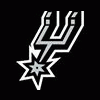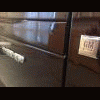Fresh fuel, fuel filter, and charging/replacing battery and inspecting battery cables are essential--but I might check fuel pressure at prime BEFORE changing parts. Verify serpentine belt. Inspect air filter--make sure rodents haven't made a nest in the airbox, or chewed-through the filter. Verify ALL other fluid levels: engine oil, ATF, PS, Brake, engine coolant, etc. Change fluids and filters as desired--I might run the engine for a day or two to assess it's condition, then change all the fluids and filters. You may need a scan tool to properly flush the brake fluid. See service manual for details.
Stall-misfire? Verify ignition system--coil packs, plug wires, spark plugs. Check coil output voltage using a spark-tester calibrated for HEI. (Use one that the spark jumps an actual calibrated gap, the ones where the spark makes a light-bulb glow are worthless.) Cranking compression test to verify basic engine health while the spark plugs are removed for inspection/replacement.
There are many suppliers and designs of spark-testers. My favorite style are ones like this, and the price is very reasonable:
https://www.amazon.com/dp/B003WZXAWK/?coliid=I3S98D7T1J0RLJ&colid=2VLYZKC3HBBDO&psc=1&ref_=list_c_wl_lv_ov_lig_dp_it
Connect a scan tool, verify EVERY sensor. All but the O2 sensor, and MAF (if equipped) can have at least some testing done before the engine even starts.
Expect to replace the O2 sensor, they get slow with age/mileage.
IF (big IF) the cranking compression, ignition system, and the computer sensors check out, you may have fuel injector trouble. That's often harder to diagnose than ignition/sensor items, so I assume they're good until everything else has been proven OK.



